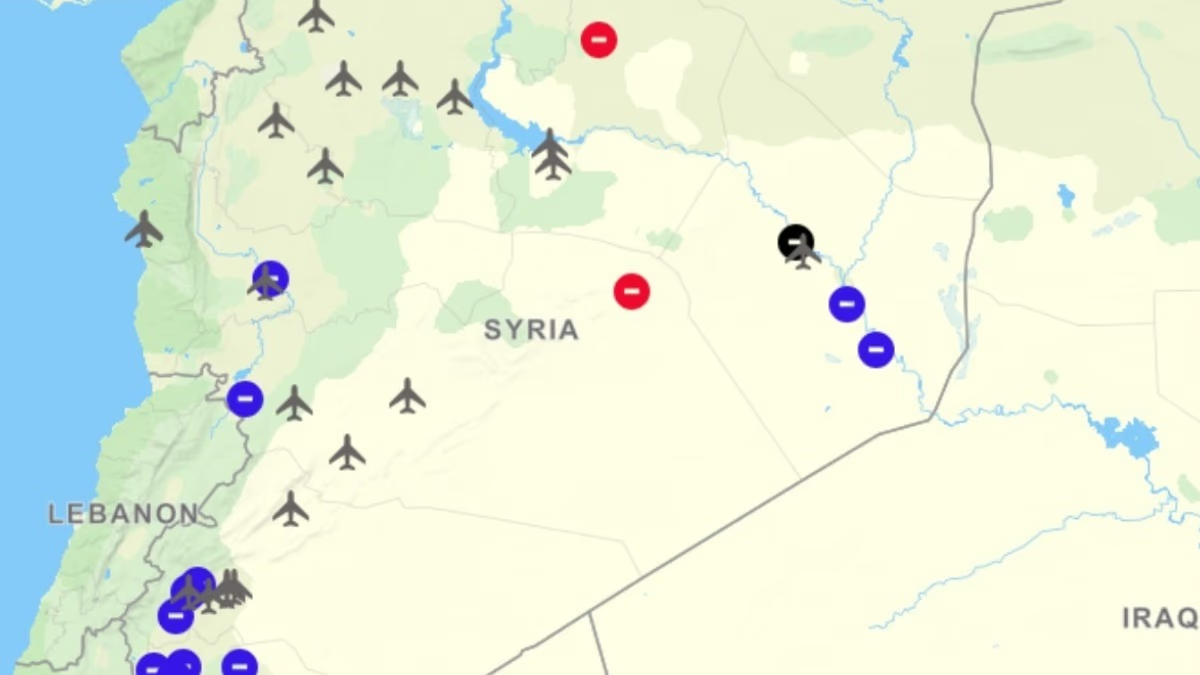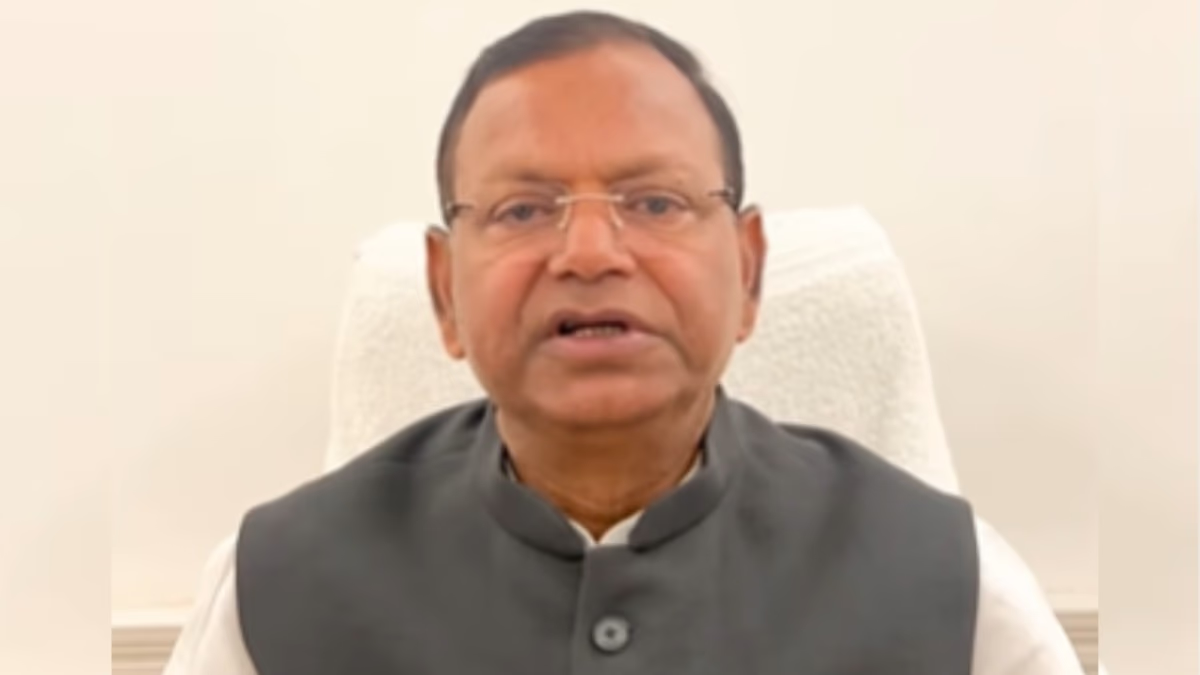Following the overthrow of President Bashar al-Assad, Syria has seen a drastic shift as rebel forces claim control over Damascus. After a tumultuous 13-year civil war, Assad has left the country, sparking concerns in the West about the potential seizure of Syria's vast arsenals and strategic locations by its adversaries.
Recent reports indicate a surge in airstrikes on major targets across Syria. The U.S. Central Command (CENTCOM) announced over 75 strikes against key ISIS figures, operatives, and camps, aiming to contain the chaos post-Assad’s regime.
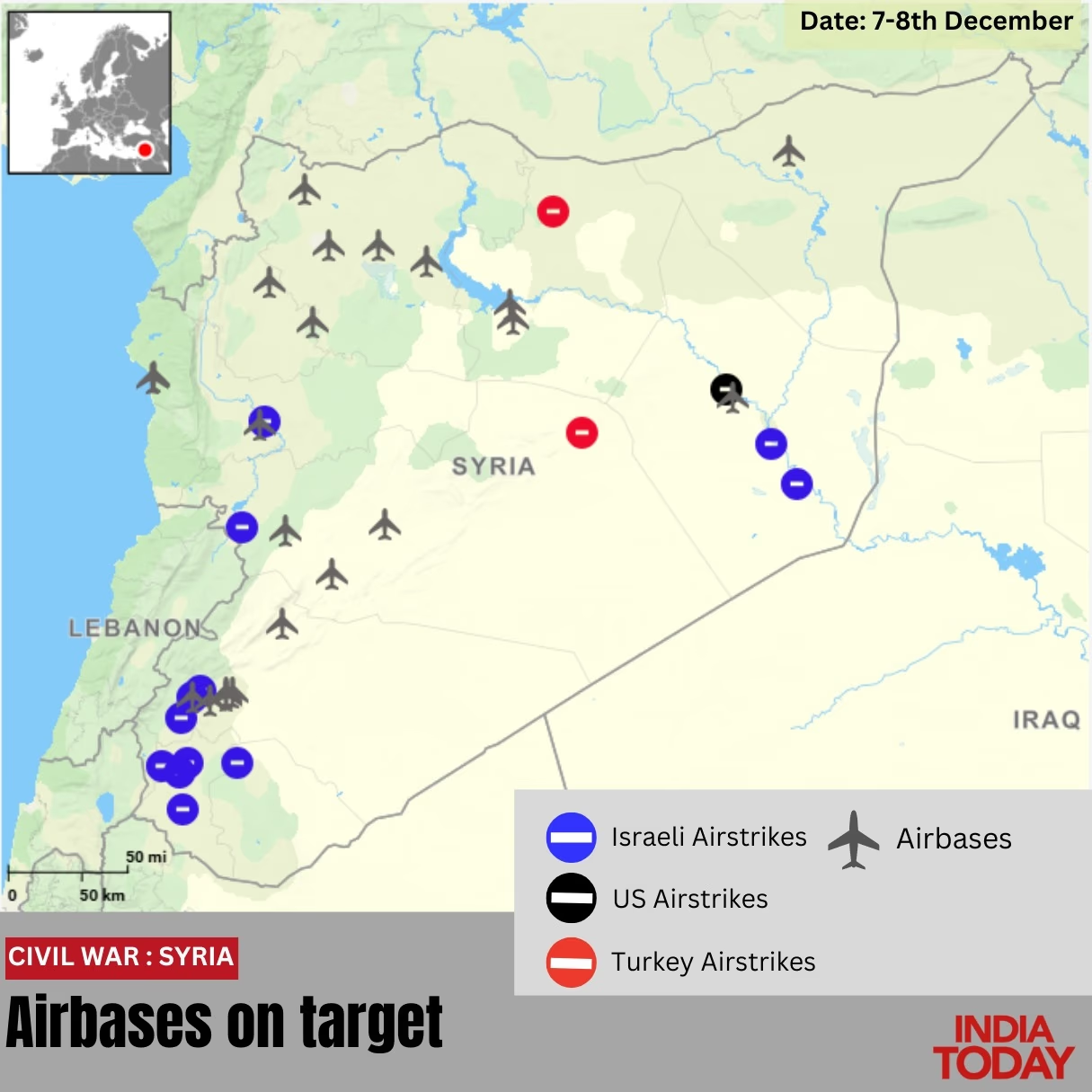
Source: aajtak
Source: LiveUmap, ISW, Media Reports (Note: Map incomplete)
Israeli Foreign Minister Gideon Sa'ar reaffirmed his country's resolve to target suspected chemical weapon sites in Syria, emphasizing the mission's imperative to block these weapons from reaching unfriendly factions.
Read More:
According to India Today’s map, the air raids conducted by Israel, the U.S., and Turkey focus on critical military bases to prevent ISIS control. Assad had significant backing from Iran, Russia, and the Lebanese militant group Hezbollah. Western nations categorize the leading rebel coalition group, Hayat Tahrir al-Sham (HTS), as a terrorist organization.
In Syria, approximately 900 U.S. troops are stationed, primarily in Kurdish-controlled northeastern oil fields and a southeastern garrison. America's role in the Syrian civil war has evolved, yet it consistently remains focused on battling remaining ISIS militants.
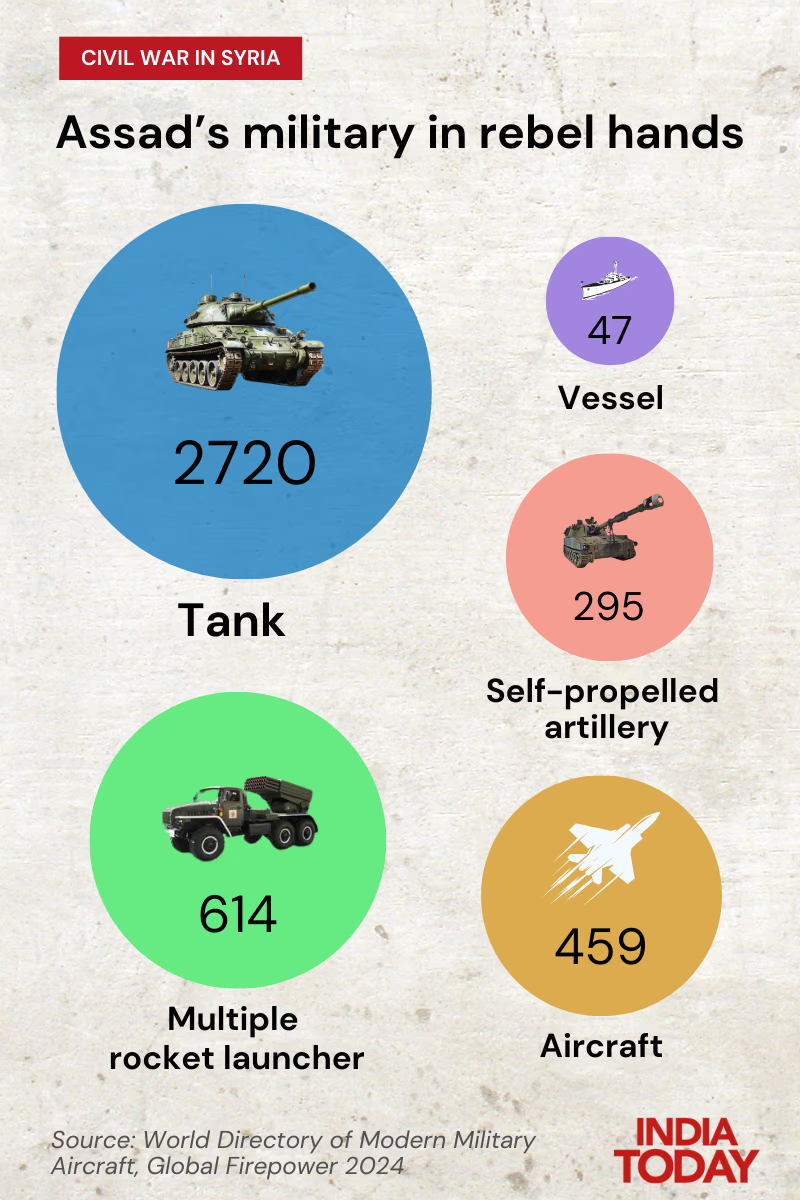
Source: aajtak
Transformation of Syria's Map in Two Weeks
For over a decade, Assad retained power, bolstered by Russian and Iranian military support. Rebel forces, last week, captured substantial areas of northwest Syria. They overtook Aleppo, followed by Hama and Homs, eventually entering and seizing Damascus without conflict, forcing government troops to flee.
Read More:
The conflict ignited in 2011 when Syrians staged peaceful uprisings against President Bashar al-Assad’s government. The government’s violent reaction led communities to take up arms in self-defense.
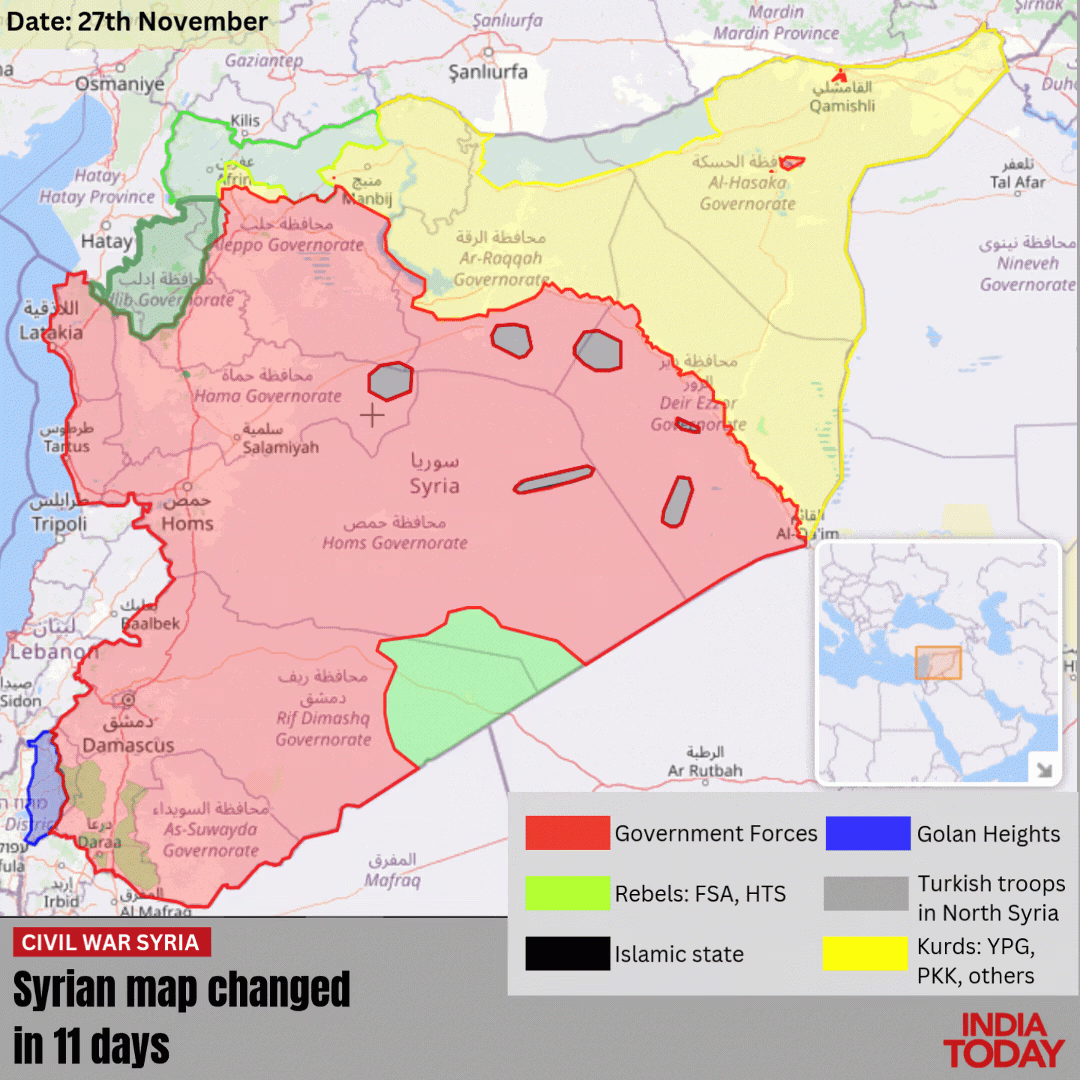
Source: aajtak
Changing Rules
With multiple factions entangled in Syria’s strife, the Syrian government forces, army, and National Defense Forces fought to support Assad's regime. HTS dominated Idlib, while Turkish-linked security forces like the Syrian National Army (SNA) operated in the North. HTS and SNA joined forces to topple Assad’s government, with the U.S.-backed Syrian Democratic Forces (SDF) sustaining autonomous control in the northeast.
In its initial years, including Islamist extremists and moderates alike, rebels controlled vast regions. By 2014, their strongholds spanned the northwest, regions near Damascus, southeastern border adjacent to Israel, and portions of northeast Euphrates and al-Hasakah provinces.
Read More:
2014 marked the turning tide with the rise of the Islamic State and Russia’s military support for Assad. The Islamic State expanded its reach in northeast Syria, as Russian airstrikes forced rebel groups to retreat. Over time, forces backing Assad, supported by Iranian and Hezbollah fighters, reclaimed major territories by 2016, including Aleppo and areas along the Euphrates in 2017. By 2019-2020, government forces confined rebels to Idlib province, escalating tensions.
In late November this year, clashes reinvigorated as opposition forces initiated a fresh assault towards the capital.
